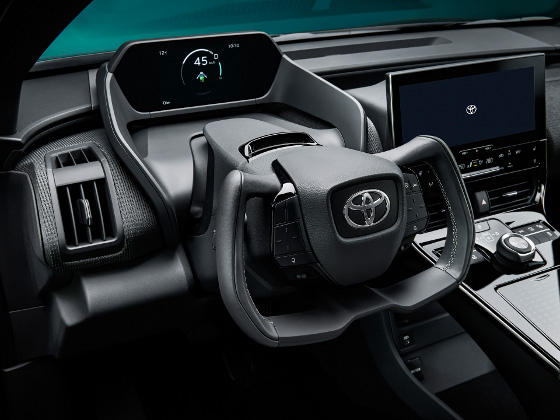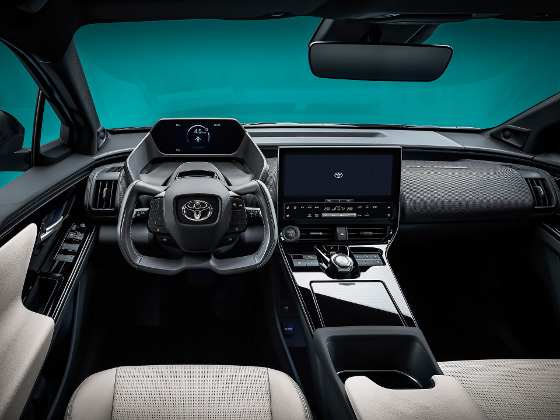 |
| May 04, 2021 | Volume 17 Issue 17 |
Designfax weekly eMagazine
Archives
Partners
Manufacturing Center
Product Spotlight
Modern Applications News
Metalworking Ideas For
Today's Job Shops
Tooling and Production
Strategies for large
metalworking plants
Toyota bZ4X Concept SUV:
First in a global series of electric vehicles

Toyota will have a brand new line of all-electric vehicles called "bZ" hitting the market starting in mid-2022, and the company has released a first look at its design language in the form of the bZ4X SUV Concept, a D-class midsize SUV. Toyota plans for seven "Beyond Zero" models by 2025. Since the production date of this SUV is so soon, we can expect that this concept is a fully realized model with final particulars being sorted out.
There are not a lot of details, especially in terms of specs, provided by Toyota on the bZ4X, but there are a few nice surprises. Hopefully, more information will be released soon. Here's what we know so far.



The Toyota bZ4X SUV Concept is built on the new e-TNGA battery electric vehicle (BEV) dedicated platform. Thanks to its clever design, the e-TNGA platform is both highly versatile and easily adaptable for a range of product types.
The basic architecture principle is that a number of key elements remain fixed while others vary. This allows variance in vehicle width, length, wheelbase, and height. e-TNGA can also be defined with front-, rear-, or four-wheel drive and with a wide-range of battery and electric motor capacities to suit various vehicle types and usage profiles. By using this versatile approach, the development time of different product variants by Toyota can be reduced, and individual models can be developed in parallel.


For the bZ4X SUV Concept, Toyota has not specified its battery size, vehicle range (we expect it to be close to 300 miles or even over per charge), or number of drive motors. That is a bummer.
Using a BEV-specific (skateboard-type) platform with a flat floor, the bZ4X combines a long wheelbase with a short overhang. This results in both a distinctive design and an interior space comparable to a D-segment sedan.
The bZ4X will feature a new AWD system jointly developed with Subaru. It aims to combine safe and pleasing driving performance with impressive off-road performance.

In addition to the use of regenerative energy systems, the vehicle is also supposed to feature a solar recharging system that recharges the battery (to some small extent) while stationary. The amount of solar recharging power available is not known at this time. We assume the recharging panels are on the roof -- like an option that will be available on the Hyundai IONIQ 5 (coming this fall) that provides 3 or 4 extra miles during a sunny day. This feature is a pleasant surprise.


Inside, the low position of the instrument panel is made even more apparent by its isolated, recessed design that kind of looks like the driver is commanding a simulator module screen. A uniquely shaped steering wheel, which eliminates the need to change grip when steering, is part of the vehicle's steer-by-wire system. Using steer-by-wire technology does away with the mechanical connection through the steering shaft and results in a more direct response between steering operation and driving force. It also enables the vehicle to turn with less steering angle and more precision, but it could take some getting used to for some drivers.


This type of system change also frees up space. There is a great deal of design effort made to play up the sense of space overall in the bZ4X, and in this specific case to improve visibility and contribute to safe and secure driving.
Interior finishes are on the mid to lower end. This is not a luxury SUV, but it looks sharp and spacious and gives us a better idea of what is to come for Toyota's all-electric offerings.


VIDEO: Toyota bZ4X 360-degree walkaround.

Source: Toyota
Published May 2021
Rate this article
View our terms of use and privacy policy
